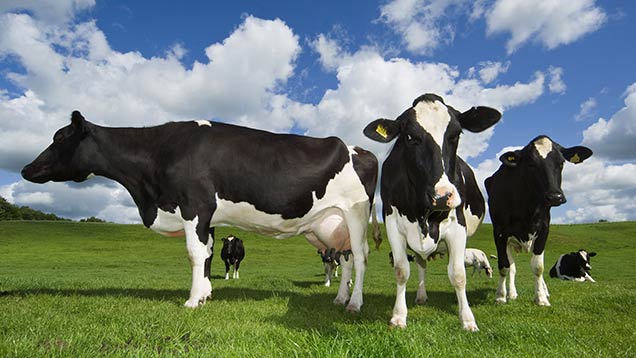16 signs to assess whether your cows are happy
 © Rex
© Rex To maximise cow performance and overall farm profitability, it’s important to understand whether cows are functioning at their best by observing cow behaviour.
Here are 16 signs to assess whether your cows are happy.
Signs of an uncomfortable feed fence:
1. Pressure lumps and/or hair removal on the neck indicate the neck rail is too low. Solution; raise the neck rail and/or move it forward.
2. Bruises or cuts on the brisket suggests the bottom part of the fence is too high, or too wide, or feed table is too low.
See also: Dairy farmer creates unique roundhouse for calf rearing
3. If the floor is the same level as the feed table, cows cannot easily reach feed. In this situation pushing up regularly is vital.
Space around the feed fence:
4. Trough space (lactating cows): 75cm per cow
5. Trough space (dry cows): 85cm per cow
6. It is important there is enough space for every cow to eat at the same time to allow for heifers, lame or low-ranking animals to eat.
Rumen fill:
7. Rumen fill indicates how much the animal has eaten in the past six hours.
8. Score 3 to 4 is acceptable for lactating cows
9. Score 4 to 5 is acceptable for dry cows
See also: Pros and cons of beef cattle housing system
Body condition score (BCS):
10. Gives an indication of what the cow has eaten in the past month.
11. Interested in the actual score but also the change in score from each of the key cow groups.
12. It normally takes about four weeks for BCS to change by 1 point. But if there is poor feed intake around calving, it can drop by 0.5 points in a week.
13. BCS monitoring of key groups: Late lactation, dry cows, fresh-calved cows, 60-day lactation cows.
Muck sieving: Cow signals where feed digestion can be improved
14. Fibres >1.2cm in length?
15. Presence of undigested grain?
16. > than 50% of the sieved sample remains after washing
Information supplied by Mole Valley Farmers
